Noelani Rutz is a Swiss product designer based in Zurich. She graduated with honors from ECAL/école cantonale d‘art de Lausanne, where she worked as a teaching assistant the following two years. After gaining experience working for Shigeki Fujishiro in Tokyo and Jörg Boner productdesign in Zürich, she is now focusing on her own practice. With a keen eye for detailed simplicity, her hands on approach commits to a thoughtful combination of traditional craft, material research and pragmatic solutions.
Mail Instagram
Swiss Design Awards, 2025
Art Basel, Basel, Switzerland
Home Sweet Home, 2025
VitraHaus, Weil am Rhein, Germany
Ukurant Unwrapped, 2024
3 days of design, Copenhagen, Denmark
Out of the wood works, NOV Gallery, 2024
House of Switzerland, Salone del Mobile, Milano, Italy
Testa e Croce, 2022/23
ADI Design Museum, Milano, Italy
Raw Senses, OKRO Gallery, 2022
Zürich Design Week, Zürich, Switzerland
TechChraft, NOV Gallery, 2021
NOV Gallery, Carouge, Switzerland
TechChraft, NOV Gallery, 2021
Alcova, Salone del Mobile, Milano, Italy
ECAL x MacGuffin, 2018/19
Istanbul Design Biennial, Istanbul, Turkey
Luma, Arles, France
Baskets, with Shigeki Fujishiro, 2018
PLACE by method, Tokyo, Japan
Prices and Grants
Swiss Design Award Finalist, 2025
Design With Japan Grant, Pro Helvetia, 2024/2025
Pro Helvetia Grant, 2024
Ikea Foundation Switzerland Grant, 2023
Pro Helvetia, Copenhagen Matchmaking Programme, 2023
Ikea Foundation Switzerland Grant, 2020
Prix de l‘ECAL, 2019
Press
Wohnrevue, 2025
Hochparterre, 2024
Hochparterre, 2023
Wohnrevue, 2021
Das Ideale Heim, 2020
Hochparterre, 2020
Ignis
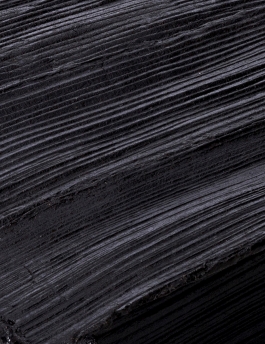
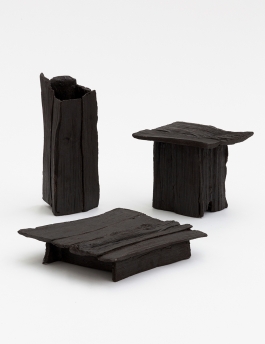
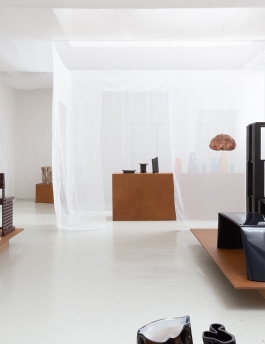
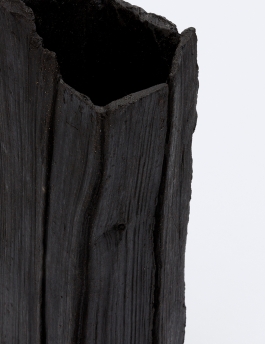
“Ignis” perpetuates firewood, a beautiful yet ephemeral material into long-lasting objects by being translated into a new material, resulting in an experimental collection of casted ceramic objects. Using fire as a connecting and guiding element, the clay objects are fired with the ancient method of pit firing. Once fired, clay outlives wood. While fire obliterates the materiality of wood by turning it into ashes, it does the opposite to clay. The ashes additionally serve as component for the glaze in a second firing, closing the circle quite poetically.
This Project has been exhibited during Salone del Mobile in Milan, 3 Days of Design in Copenhagen and Zurich Design Weeks.
Photography: AO–N Studio
Supported by Ikea Foundation Switzerland and Pro Helvetia
Plagn
Okro Gallery
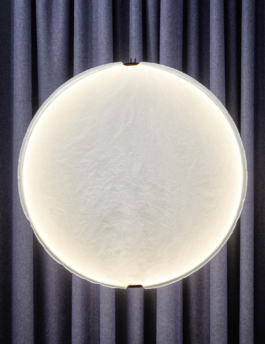
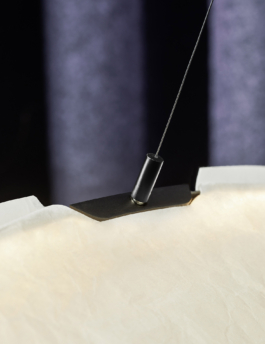
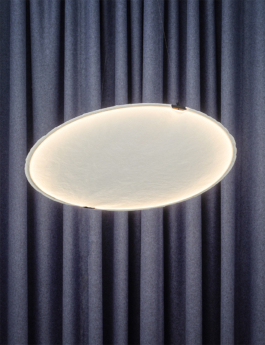
This lamp is part of a project initiated by the Swiss Magazine Wohnrevue and Okro Gallery in collaboration with Schätti Leuchten, one of the biggest lighting company in Switzerland. The calming and lingering atmosphere of the Teshima Art Center and its fascinating interplay between the light mood and sense of space was the inspiration to Plagn. A narrow spring steel band tenses a round paper casing and serves as support for the LED band. Thanks to the flat angle of incidence on the paper an atmospheric lighting effect is created highlighting the fibrous structure.
Photography: Lorenz Cugini
Sen
NOV Gallery
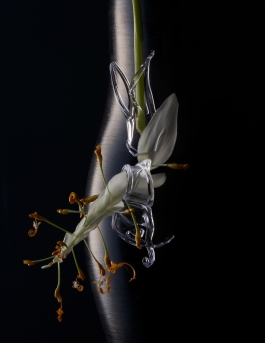
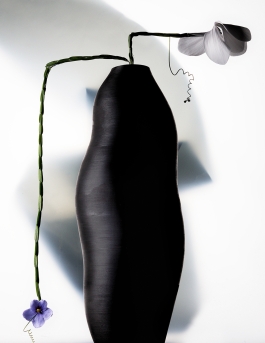
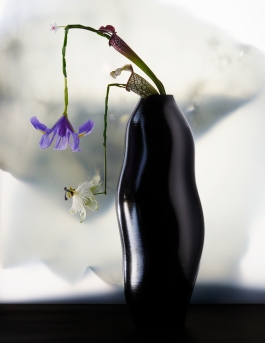

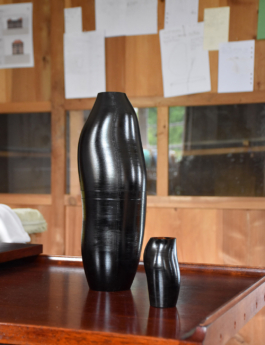
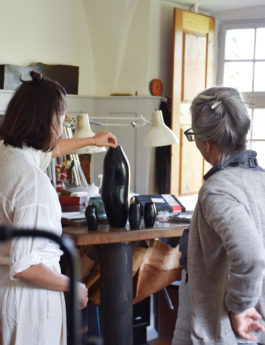
Sen is a response to the subject “TechCraft” given by the Gallery NOV in Geneva, initially for an exhibition at the Salone del Mobile 2020. 3D printing is used as a fast way to materialise virtual modalisations. It is the most time, cost and effort efficient way to make mock ups. Yet, its application hardly ever goes beyond this stage, which is why I am taking this technology to directly produce the final object. Urushi is a lacquering technique and precious tradition that has been used over several centuries in Japan. It is usually applied on thinly turned wood bowls, not only to give them a highly lusterous and desirable look, but also reinforce and protect the material. It can also be applied to other materials, wich is an ideal start to a dialogue between digital technologies and analogue craftsmanship. For this first series of vases I worked with Salome Lippuner, an in Japan trained urushi lacquer artisan.
Sen, meaning “line”, is not only referring to the horizontal levels created by the 3D printing but also the reflections on the dark shiny material of the organic shaped body that observed from a far, start to dance.
Photography: Cecilia Poupon, Luisa Kahlfeldt
Set: Studio Végété
Supported by Ikea Foundation Switzerland
Cypriot Scenography
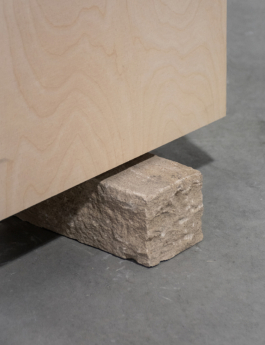
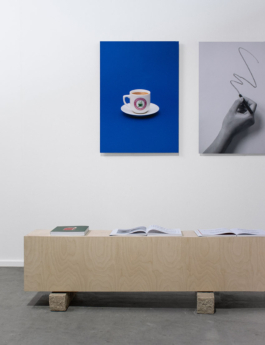
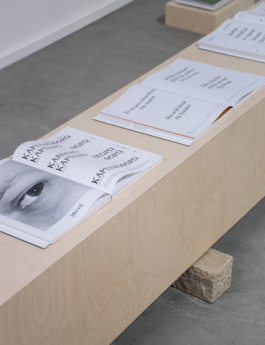
Cyprus inspired Scenography for Graphic Designer Clio Hadjgeorgiou for her exhibiton at the Swiss Design Awards.
"The Greek Cypriot dialect was broadcast for the first time on a radio show called Cypriot Sketches in 1953, when the island’s first radio station was established by the British colonial government. An exclusively acoustic performance genre, The Cypriot Sketch draws on themes from Cypriot rural life, traditions and customs, revealing aspects of the island’s social history. Using the scripts of three Cypriot Sketches by Andreas Koukides, this book unpacks some of the main linguistic and socio-cultural characteristics of the Greek Cypriot dialect through a system of graphic and visual annotations that are accessible to both Greek and English speakers."
Mortar 21
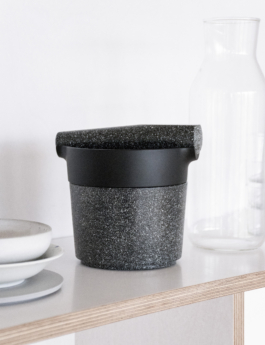
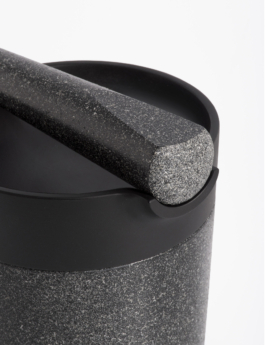
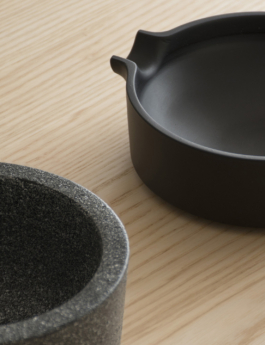
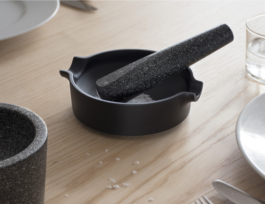
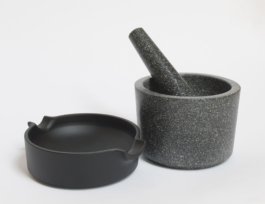
This mortar and pestle is based on an analytical observation of the archetype, which allowed redesigning the object, improving its weaknesses. The big mortar is made of granit, its rough surface on the inside allows easy grounding of seeds and spices. The flat, iron cast mortar serves to squeeze and pour liquid pastes. The granit pestle has a flatened side to scrape the food out of the mortars.
Table de Naye
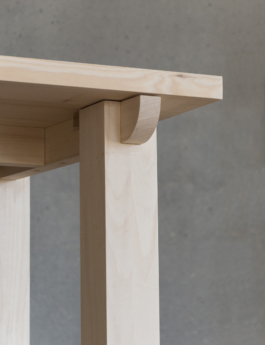
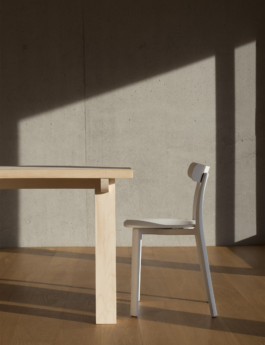
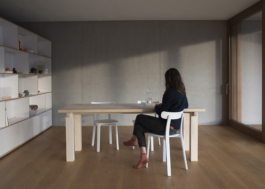
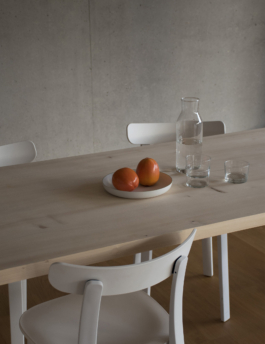
The massiv fir table is a part of a proposition for new furniture of the interior for “Rochers-de-Naye”, a restaurant and ski station located above Montreux. It is referencing traditional massive alpine furniture and concentrating on local wood sourcing and manufacturing.
Imazato
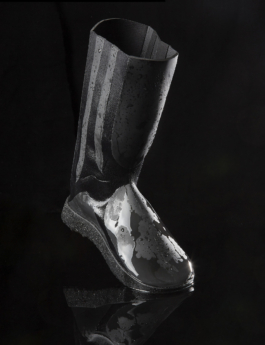
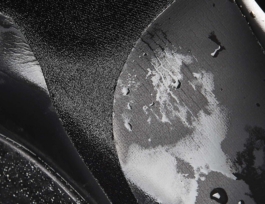
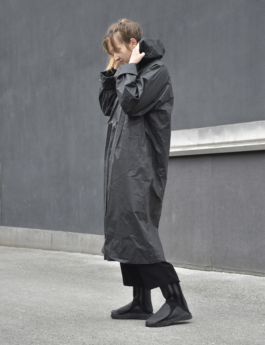
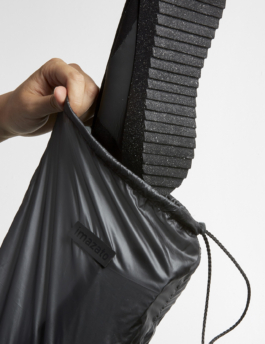

Imazato is a foldable rainboot for places with unpredictable weather and allows a more compact traveling or storing. The boots are made from geoprene, a special type of neoprene produced by Yamamoto Corporation, a Japanese factory close to Osaka. Instead of using petrol, they are able to process limestone to create an innovative, high performing rubberlike material. This production method uses a fraction of energy resource to normal neoprene and the company is now working on recycling this material.
Photography: Noe Cotter
Tilia
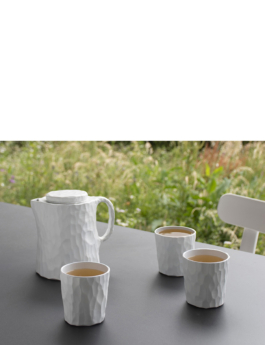
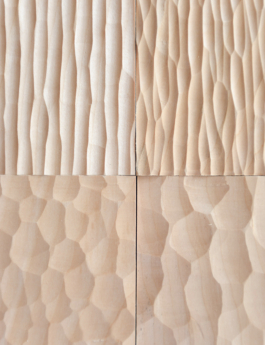
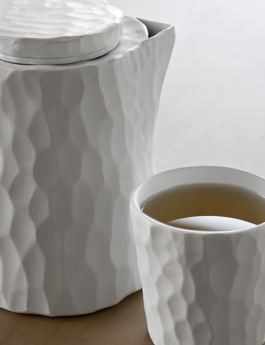
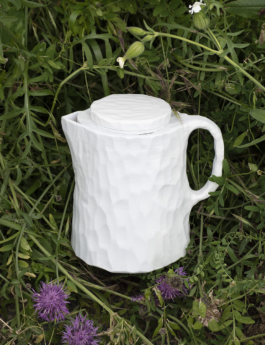
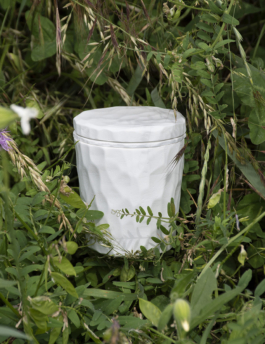
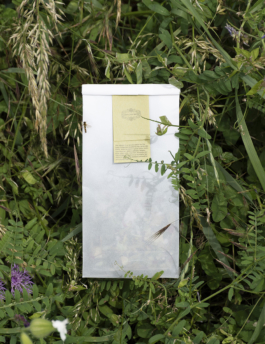
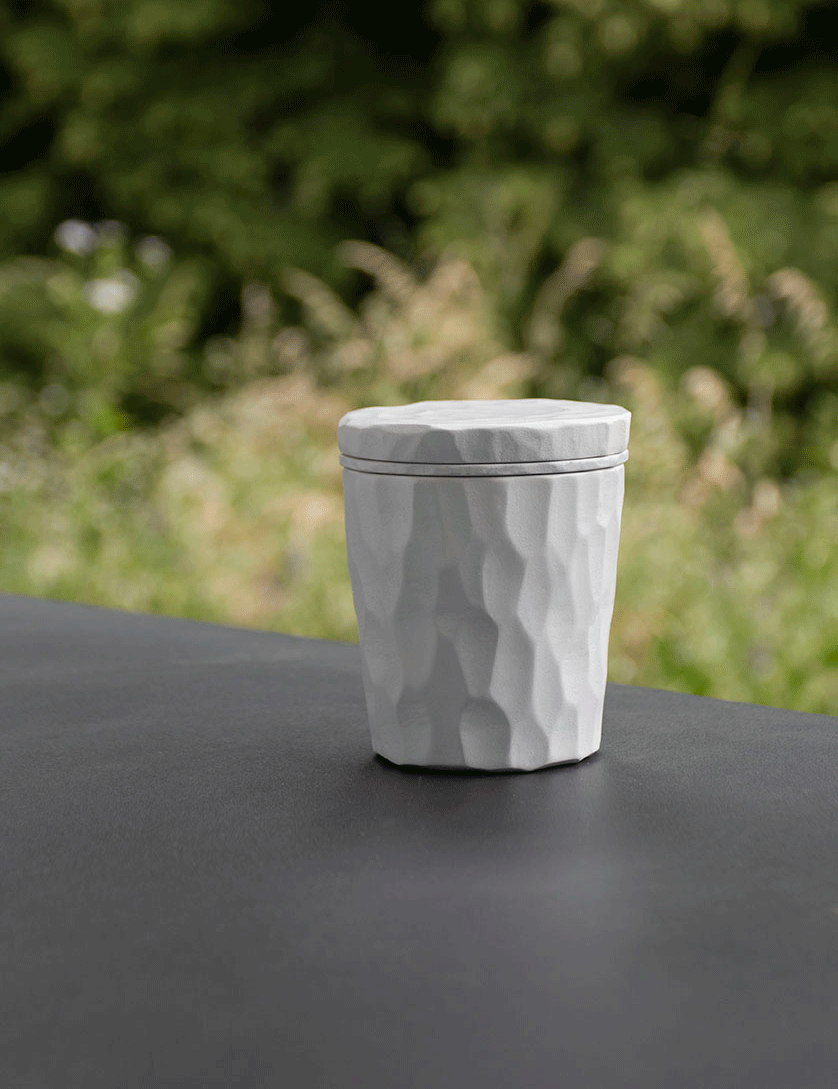
Playing with materiality, Tilia is a tea set reinterpreting woodcarving onto a new medium. The volumes are initially carved out of wood, then moulded to create slip casted ceramics. To complete the set, "Jardin des Monts", a small garden in Rossinière growing herbs for tea and cosmetics, kindly created a unique mix of herbs.
Stapled Basket
PLACE by method


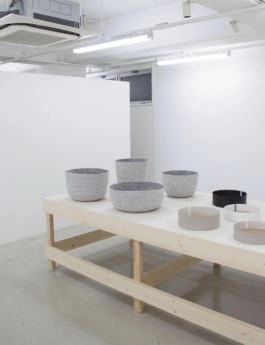
The stapled baskets are the result of a collaboration with Shigeki Fujishiro, as part of a series of baskets made from unconventional material, conceived for the gallery PLACE by method in Tokyo, Japan. We decided to use strips of cheap felt, usually used as protection when moving or painting and staple them together. It was important to me to keep the shape of the basket simple and coherent to let the material and technique speak.
Ona pads
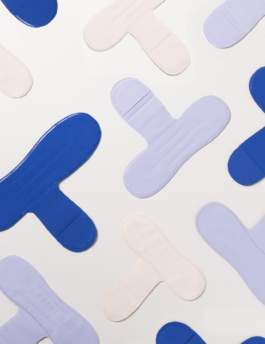
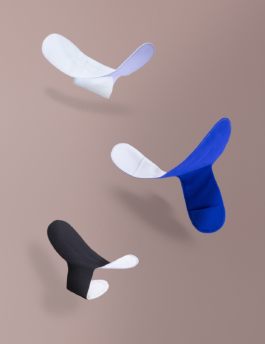

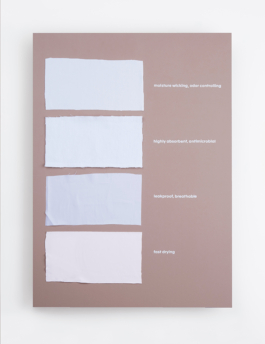
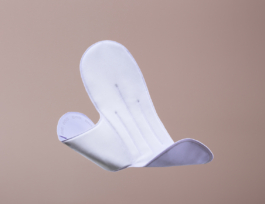
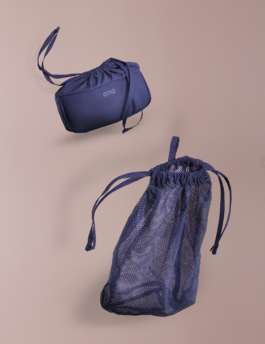
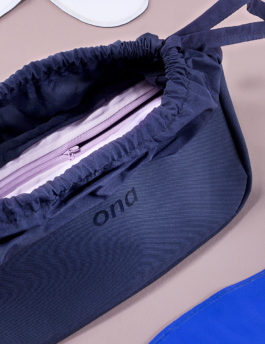
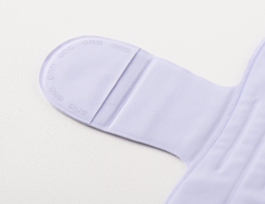
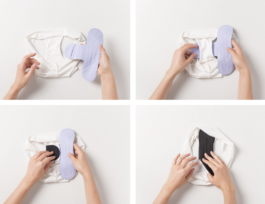
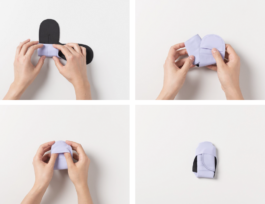
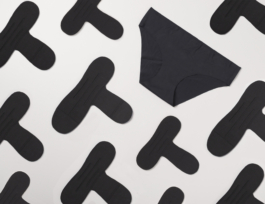
Throughout their life, a menstruating person uses an estimated 16‘800 disposable female hygiene products, which adds up to around 140 kilos of waste. This means that world-wide around 45 billion used hygiene products land on landfills each year. The individual items can take up to 500 years to decompose, which means that the first ever sanitary pad is still somewhere on a landfill. Disposable hygiene products do not only have a negative impact on the environment, they can also be harmful to the user. There are no legal requirements when it comes to listing ingredients on female care packaging. Therefore traces of carcinogen, reproductive and neuro toxins, such as Styrene, Chloroethane, Chloroform can be found in tampons and pads, which can cause irritation and have adverse impacts on health.
The above mentioned reasons and the importance to talk about this stigmatised topic inspired me to create the “Ona pad” and increase the market diversity of sustainable and healthy alternatives for periode products.
The Ona pads come in three different sizes depending on the strength of the flow and equal from 0.5 to 2.5 tampons. Some people prefer not to see their blood, and some consider it important to know the intensity and color, both indicating the stage of period. For this reason, the pads are available with a black or white inner layer.
The special shape of the Ona pad avoids the extra bulk of push buttons or velcro, which are used in the current washable sanitary pads. Another detail that helps decreasing the bulkiness and making the pad as least noticeable as possible are three distinct creases that help the pad adapt to the shape of the body. The pad’s tongue wraps around the underwear and, with the aid of tension and silicone details, secures the pad in place.
The day pouch and wash bag offer a solution for an easy way of transporting both the clean and used pads, as well as facilitating the process of washing them. The day pouch provides two compartments, one for the clean and a water proof one for the used pads. Once at home, the pads can either be pre-washed by hand or placed directly into the mesh bag. The mesh bag provides storage for the pads and can be placed directly into the washing machine once the period is over.
Photography: Adrien Sgandurra
Video: Alexandra Trotobas, Moritz Tobler
© 2024 All rights reserved
Up↑
Noelani Rutz is a Swiss product designer based in Zurich. She graduated with honors from ECAL/école cantonale d‘art de Lausanne, where she worked as a teaching assistant the following two years. After gaining experience working for Shigeki Fujishiro in Tokyo and Jörg Boner productdesign in Zürich, she is now focusing on her own practice. With a keen eye for detailed simplicity, her hands on approach commits to a thoughtful combination of traditional craft, material research and pragmatic solutions.
Mail Instagram
Swiss Design Awards, 2025
Art Basel, Basel, Switzerland
Home Sweet Home, 2025
VitraHaus, Weil am Rhein, Germany
Ukurant Unwrapped, 2024
3 days of design, Copenhagen, Denmark
Out of the wood works, NOV Gallery, 2024
House of Switzerland, Salone del Mobile, Milano, Italy
Testa e Croce, 2022/23
ADI Design Museum, Milano, Italy
Raw Senses, OKRO Gallery, 2022
Zürich Design Week, Zürich, Switzerland
TechChraft, NOV Gallery, 2021
NOV Gallery, Carouge, Switzerland
TechChraft, NOV Gallery, 2021
Alcova, Salone del Mobile, Milano, Italy
ECAL x MacGuffin, 2018/19
Istanbul Design Biennial, Istanbul, Turkey
Luma, Arles, France
Baskets, with Shigeki Fujishiro, 2018
PLACE by method, Tokyo, Japan
Prices and Grants
Swiss Design Award Finalist, 2025
Design With Japan Grant, Pro Helvetia, 2024/2025
Pro Helvetia Grant, 2024
Ikea Foundation Switzerland Grant, 2023
Pro Helvetia, Copenhagen Matchmaking Programme, 2023
Ikea Foundation Switzerland Grant, 2020
Prix de l‘ECAL, 2019
Press
Wohnrevue, 2025
Hochparterre, 2024
Hochparterre, 2023
Wohnrevue, 2021
Das Ideale Heim, 2020
Hochparterre, 2020
Ignis




“Ignis” perpetuates firewood, a beautiful yet ephemeral material into long-lasting objects by being translated into a new material, resulting in an experimental collection of casted ceramic objects. Using fire as a connecting and guiding element, the clay objects are fired with the ancient method of pit firing. Once fired, clay outlives wood. While fire obliterates the materiality of wood by turning it into ashes, it does the opposite to clay. The ashes additionally serve as component for the glaze in a second firing, closing the circle quite poetically.
This Project has been exhibited during Salone del Mobile in Milan, 3 Days of Design in Copenhagen and Zurich Design Weeks.
Photography: AO–N Studio
Supported by Ikea Foundation Switzerland and Pro Helvetia
Plagn
Okro Gallery

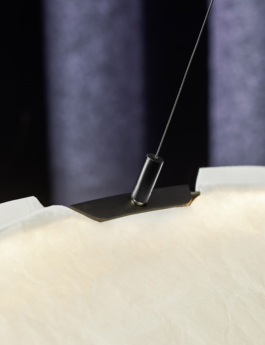

This lamp is part of a project initiated by the Swiss Magazine Wohnrevue and Okro Gallery in collaboration with Schätti Läuchten, one of the biggest lighting company in Switzerland. The calming and lingering atmosphere of the Teshima Art Center and its fascinating interplay between the light mood and sense of space was the inspiration to Plagn. A narrow spring steel band tenses a round paper casing and serves as support for the LED band. Thanks to the flat angle of incidence on the paper an atmospheric lighting effect is created highlighting the fibrous structure.
Photography: Lorenz Cugini
Sen
NOV Gallery






Sen is a response to the subject “TechCraft” given by the Gallery NOV in Geneva, initially for an exhibition at the Salone del Mobile 2020. 3D printing is used as a fast way to materialise virtual modalisations. It is the most time, cost and effort efficient way to make mock ups. Yet, its application hardly ever goes beyond this stage, which is why I am taking this technology to directly produce the final object. Urushi is a lacquering technique and precious tradition that has been used over several centuries in Japan. It is usually applied on thinly turned wood bowls, not only to give them a highly lusterous and desirable look, but also reinforce and protect the material. It can also be applied to other materials, wich is an ideal start to a dialogue between digital technologies and analogue craftsmanship. For this first series of vases I worked with Salome Lippuner, an in Japan trained urushi lacquer artisan.
Sen, meaning “line”, is not only referring to the horizontal levels created by the 3D printing but also the reflections on the dark shiny material of the organic shaped body that observed from a far, start to dance.
Photography: Cecilia Poupon, Luisa Kahlfeldt
Set: Studio Végété
Supported by Ikea Foundation Switzerland
Cypriot Scenography



Cyprus inspired Scenography for Graphic Designer Clio Hadjgeorgiou for her exhibiton at the Swiss Design Awards.
"The Greek Cypriot dialect was broadcast for the first time on a radio show called Cypriot Sketches in 1953, when the island’s first radio station was established by the British colonial government. An exclusively acoustic performance genre, The Cypriot Sketch draws on themes from Cypriot rural life, traditions and customs, revealing aspects of the island’s social history. Using the scripts of three Cypriot Sketches by Andreas Koukides, this book unpacks some of the main linguistic and socio-cultural characteristics of the Greek Cypriot dialect through a system of graphic and visual annotations that are accessible to both Greek and English speakers."
Mortar 21





This mortar and pestle is based on an analytical observation of the archetype, which allowed redesigning the object, improving its weaknesses. The big mortar is made of granit, its rough surface on the inside allows easy grounding of seeds and spices. The flat, iron cast mortar serves to squeeze and pour liquid pastes. The granit pestle has a flatened side to scrape the food out of the mortars.
Table de Naye




The massiv fir table is a part of a proposition for new furniture of the interior for “Rochers-de-Naye”, a restaurant and ski station located above Montreux. It is referencing traditional massive alpine furniture and concentrating on local wood sourcing and manufacturing.
Imazato





Imazato is a foldable rainboot for places with unpredictable weather and allows a more compact traveling or storing. The boots are made from geoprene, a special type of neoprene produced by Yamamoto Corporation, a Japanese factory close to Osaka. Instead of using petrol, they are able to process limestone to create an innovative, high performing rubberlike material. This production method uses a fraction of energy resource to normal neoprene and the company is now working on recycling this material.
Photography: Noe Cotter
Tilia







Playing with materiality, Tilia is a tea set reintroducing woodcarving onto a second material. The volumes are intially carved out of wood, then moulded to create slip casted ceramics. To complete the set, "Jardin des Monts", a small garden in Rossinière growing herbs for tea and cosmetics, kindly created a unique mix of herbs.
Stapled Basket
PLACE by method



The stapled baskets are the result of a collaboration with Shigeki Fujishiro, as part of a series of baskets made from unconventional material, conceived for the gallery PLACE by method in Tokyo, Japan. We decided to use strips of cheap felt, usually used as protection when moving or painting and staple them together. It was important to me to keep the shape of the basket simple and coherent to let the material and technique speak.
Ona pads











Throughout their life, a menstruating person uses an estimated 16‘800 disposable female hygiene products, which adds up to around 140 kilos of waste. This means that world-wide around 45 billion used hygiene products land on landfills each year. The individual items can take up to 500 years to decompose, which means that the first ever sanitary pad is still somewhere on a landfill. Disposable hygiene products do not only have a negative impact on the environment, they can also be harmful to the user. There are no legal requirements when it comes to listing ingredients on female care packaging. Therefore traces of carcinogen, reproductive and neuro toxins, such as Styrene, Chloroethane, Chloroform can be found in tampons and pads, which can cause irritation and have adverse impacts on health.
The above mentioned reasons and the importance to talk about this stigmatised topic inspired me to create the “Ona pad” and increase the market diversity of sustainable and healthy alternatives for periode products.
The Ona pads come in three different sizes depending on the strength of the flow and equal from 0.5 to 2.5 tampons. Some people prefer not to see their blood, and some consider it important to know the intensity and color, both indicating the stage of period. For this reason, the pads are available with a black or white inner layer.
The special shape of the Ona pad avoids the extra bulk of push buttons or velcro, which are used in the current washable sanitary pads. Another detail that helps decreasing the bulkiness and making the pad as least noticeable as possible are three distinct creases that help the pad adapt to the shape of the body. The pad’s tongue wraps around the underwear and, with the aid of tension and silicone details, secures the pad in place.
The day pouch and wash bag offer a solution for an easy way of transporting both the clean and used pads, as well as facilitating the process of washing them. The day pouch provides two compartments, one for the clean and a water proof one for the used pads. Once at home, the pads can either be pre-washed by hand or placed directly into the mesh bag. The mesh bag provides storage for the pads and can be placed directly into the washing machine once the period is over.
Photography: Adrien Sgandurra
Video: Alexandra Trotobas, Moritz Tobler
© 2024 All rights reserved,
Up↑